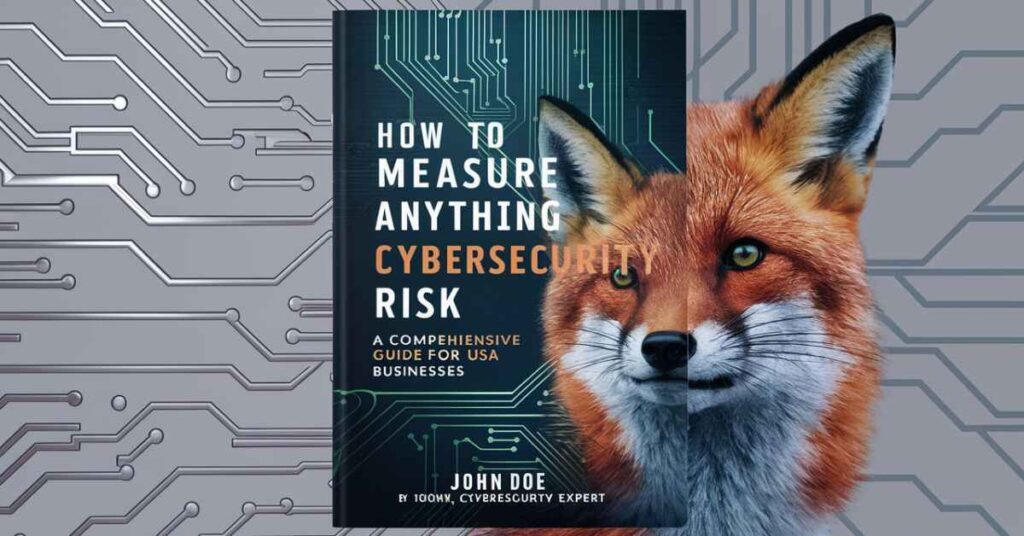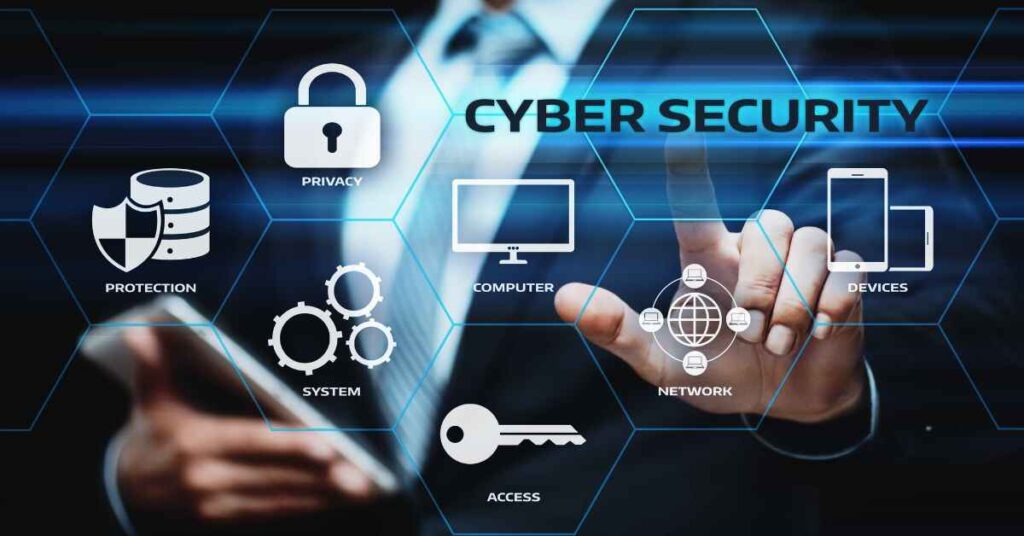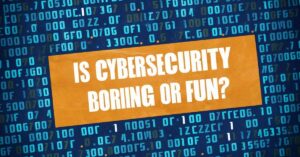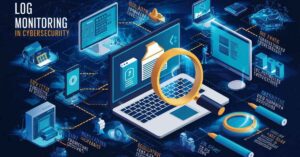In today’s digital landscape, understanding and quantifying cybersecurity risk isn’t just a technical necessity—it’s a business imperative. As cyber threats evolve at breakneck speed, organizations across the USA must adopt sophisticated methods to measure and manage their digital vulnerabilities. This guide will walk you through the intricacies of measuring cybersecurity risk, providing you with the tools and knowledge to safeguard your digital assets effectively. How to Measure Anything in Cybersecurity Risk: A Comprehensive Guide for USA Businesses.
Introduction to Measuring Cybersecurity Risk
The cybersecurity threat landscape is a shifting battlefield. Each day, new vulnerabilities emerge, and attackers devise ingenious ways to breach even the most fortified systems. Traditional risk assessment methods, often based on qualitative measures and gut feelings, no longer cut it in this complex digital ecosystem.
Enter the world of quantitative cybersecurity risk measurement. This approach brings precision to the art of risk management, allowing organizations to:
- Pinpoint vulnerabilities with laser-like accuracy
- Allocate resources more efficiently
- Make data-driven decisions about security investments
But how do you measure something as seemingly intangible as cybersecurity risk? That’s the million-dollar question we’re here to answer.
Understanding the Importance of Quantifying Cybersecurity Risk
Gone are the days when a simple “high, medium, low” risk assessment sufficed. In the fast-paced digital economy of the USA, businesses need hard numbers to back up their security strategies.
Quantifying cybersecurity risk offers several game-changing benefits:
- Precision in decision-making: Numbers don’t lie. When you can assign a dollar value to potential losses, it becomes much easier to justify security investments to the board.
- Improved resource allocation: By knowing exactly where your vulnerabilities lie, you can direct your resources where they’ll have the most impact.
- Better alignment with business goals: Quantitative risk measurements allow you to speak the language of business, tying security efforts directly to the bottom line.
“If you can’t measure it, you can’t manage it.” – Peter Drucker
This adage rings especially true in the realm of cybersecurity. By putting numbers to your risks, you’re not just improving your security posture—you’re transforming cybersecurity from a cost center into a strategic business enabler.
Key Metrics for Evaluating Cybersecurity Threats
To measure cybersecurity risk effectively, you need a robust set of metrics. Here are some crucial ones to consider:
Threat Likelihood and Impact Scores
- Likelihood: How probable is it that a specific threat will materialize?
- Impact: If the threat does occur, what would be the financial, operational, and reputational consequences?
Combine these two factors, and you get a comprehensive view of your risk landscape.
Vulnerability Assessment Metrics
- CVSS (Common Vulnerability Scoring System): This industry-standard score helps you prioritize vulnerabilities based on their severity.
- Time to patch: How quickly can your organization address known vulnerabilities?
- Vulnerability density: The number of vulnerabilities per line of code or asset.
Asset Value and Criticality Ratings
Not all assets are created equal. Assign value and criticality scores to your digital assets based on:
- Their importance to business operations
- The sensitivity of the data they contain
- The potential impact of their compromise
Incident Response Time and Effectiveness
- Mean Time to Detect (MTTD): How long does it take to identify a security incident?
- Mean Time to Respond (MTTR): Once detected, how quickly can you contain and mitigate the threat?
- Incident resolution rate: What percentage of incidents are successfully resolved without significant impact?
By tracking these metrics over time, you’ll gain invaluable insights into your organization’s cybersecurity posture and areas for improvement.
Tools and Techniques for Cyber Risk Assessment
Armed with the right metrics, it’s time to dive into the tools and techniques that’ll help you measure cybersecurity risk like a pro.
Risk Matrices and Heat Maps
These visual tools offer a quick, at-a-glance view of your risk landscape. They plot the likelihood of various threats against their potential impact, helping you prioritize your risk mitigation efforts.
Monte Carlo Simulations
Don’t let the fancy name intimidate you. Monte Carlo simulations are powerful tools that use probability distributions to model various risk scenarios. They can help you answer questions like:
- What’s the likelihood of a data breach costing us over $1 million in the next year?
- How much should we budget for cybersecurity to reduce our risk by 50%?
Bayesian Networks
These probabilistic models are excellent for dealing with uncertainty—a constant in the world of cybersecurity. Bayesian networks can help you:
- Update your risk assessments in real time as new information comes in
- Model complex relationships between different risk factors
Machine Learning Algorithms for Risk Prediction
As cyber threats become more sophisticated, so too must our defenses. Machine learning algorithms can:
- Analyze vast amounts of data to identify patterns and anomalies
- Predict potential future threats based on historical data
- Continuously improve their accuracy over time
Building a Cybersecurity Risk Measurement Framework

Now that we’ve covered the tools and metrics, let’s put it all together into a cohesive framework. How to Measure Anything in Cybersecurity Risk: A Comprehensive Guide for USA Businesses.
- Establish a Risk Appetite Statement: This document outlines how much risk your organization is willing to accept in pursuit of its objectives.
- Define Key Risk Indicators (KRIs): These are the specific metrics you’ll track to measure your cybersecurity risk.
- Create a Standardized Risk Scoring System: This ensures consistency across different departments and over time.
- Implement Continuous Monitoring Processes: Cybersecurity risk isn’t static—your measurement approach shouldn’t be either.
- Regular Reporting and Review: Share your findings with stakeholders and continuously refine your approach.
The Role of Data Analytics in Cyber Risk Measurement
In the age of big data, analytics plays a crucial role in measuring cybersecurity risk. Here’s how:
- Threat Intelligence: By analyzing vast datasets, you can identify emerging threats before they hit your organization.
- Predictive Analytics: Use historical data to forecast future risk scenarios and prepare accordingly.
- Real-time Visualization: Complex data becomes actionable insights through intuitive dashboards and reports.
Case Studies: Successful Cybersecurity Risk Measurement
Fortune 500 Company X: From Qualitative to Quantitative
Company X, a major player in the US tech sector, transitioned from a qualitative “red-yellow-green” risk assessment to a fully quantitative model. The results?
- 30% reduction in security incidents within the first year
- $2 million saved through more efficient resource allocation
- Improved board confidence in cybersecurity investments
Government Agency Y: Advanced Metrics in Action
A US government agency implemented advanced cybersecurity metrics, including:
- Time-based security scores
- Threat intelligence integration
- Automated risk calculations
The outcome? A 50% improvement in incident response times and a more resilient digital infrastructure. How to Measure Anything in Cybersecurity Risk: A Comprehensive Guide for USA Businesses.
Challenges and Solutions in Measuring Cybersecurity Risk
Measuring cybersecurity risk isn’t without its challenges. Here are some common hurdles and how to overcome them:
- Incomplete Data: Use statistical techniques like imputation to fill in gaps.
- The Human Factor: Incorporate user behavior analytics into your risk models.
- Organizational Resistance: Educate stakeholders on the benefits of quantitative risk measurement.
Integrating Cyber Risk Measurement into Business Strategy

For cybersecurity risk measurement to truly make an impact, it must be integrated into your overall business strategy. Here’s how:
- Speak the Language of Business: Translate technical metrics into business terms.
- Align with Business Objectives: Show how risk reduction contributes to business goals.
- Inform Investment Decisions: Use risk data to guide cybersecurity spending.
Future Trends in Cybersecurity Risk Measurement
As we look to the future, several trends are shaping the landscape of cybersecurity risk measurement:
- AI and Machine Learning: Expect more sophisticated predictive models and automated risk assessments.
- IoT and Cloud Security Metrics: As our digital footprint expands, so too must our risk measurement capabilities.
- Blockchain for Risk Record-Keeping: Immutable ledgers could revolutionize how we track and verify risk data.
FAQs
- Q: What’s the difference between qualitative and quantitative risk assessment?
A: Qualitative assessments use descriptive terms (high, medium, low), while quantitative assessments use numerical values and probabilities. - Q: How often should we measure cybersecurity risk?
A: Ideally, risk measurement should be an ongoing process. At a minimum, conduct a thorough assessment quarterly. - Q: Can small businesses afford comprehensive risk measurement?
A: Yes! Many tools and techniques can be scaled to fit smaller organizations’ needs and budgets. - Q: What’s the role of compliance in risk measurement?
A: While compliance is important, it shouldn’t be the sole focus. True risk measurement goes beyond mere checkbox compliance. - Q: How do we measure the ROI of cybersecurity investments?
A: By quantifying potential losses prevented and efficiency gains achieved through security measures.
Conclusion
Measuring cybersecurity risk isn’t just about numbers—it’s about empowering your organization to make informed decisions in an increasingly complex digital landscape. By adopting a quantitative approach, you’re not just improving your security posture; you’re giving your business a competitive edge in the digital age.
Remember, the journey to effective cybersecurity risk measurement is ongoing. Stay curious, keep learning, and don’t be afraid to challenge traditional approaches. Your digital future depends on it.








